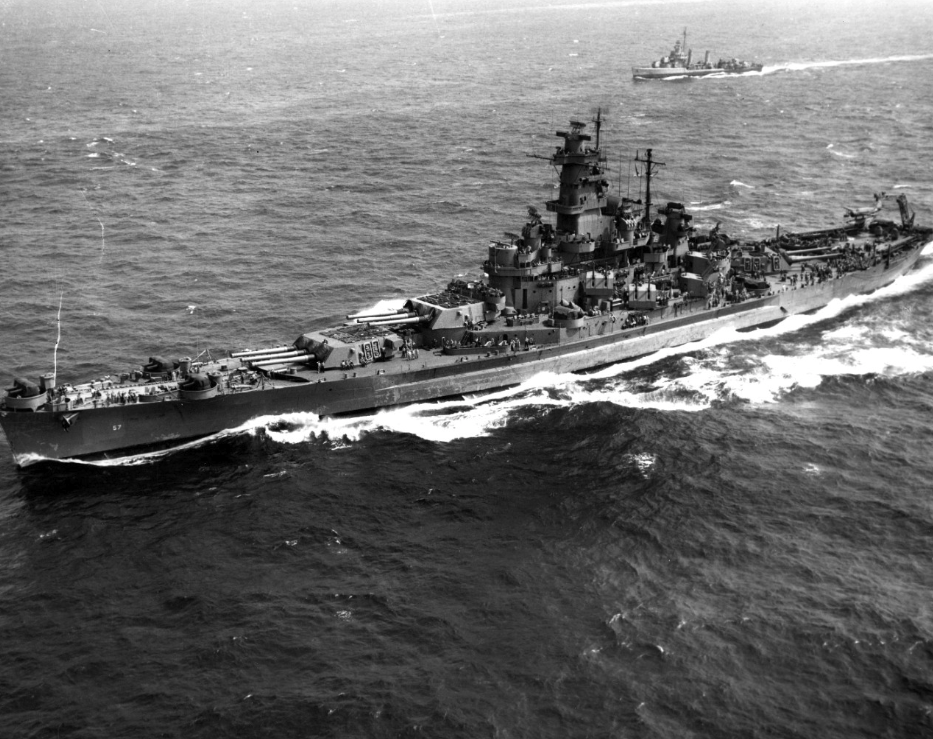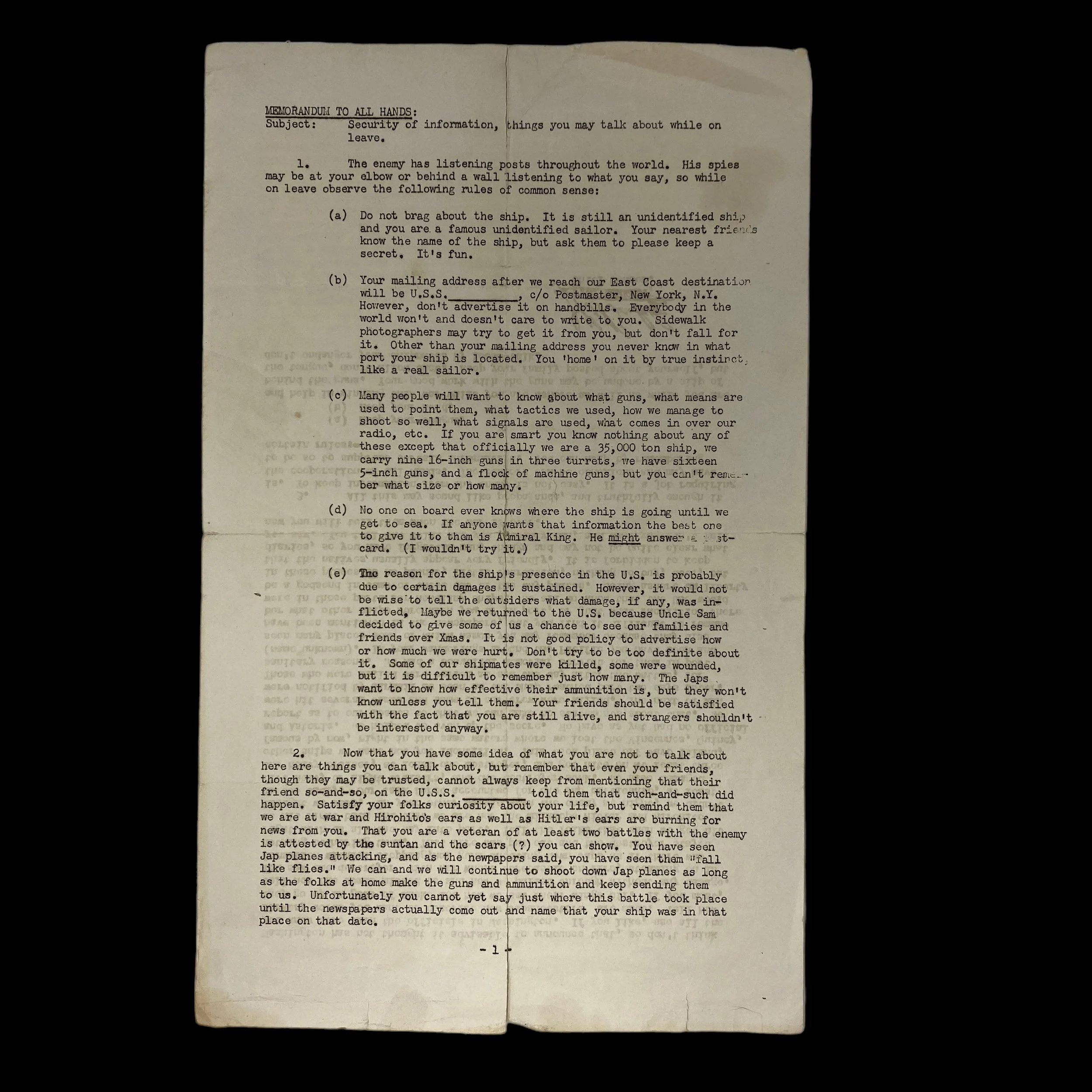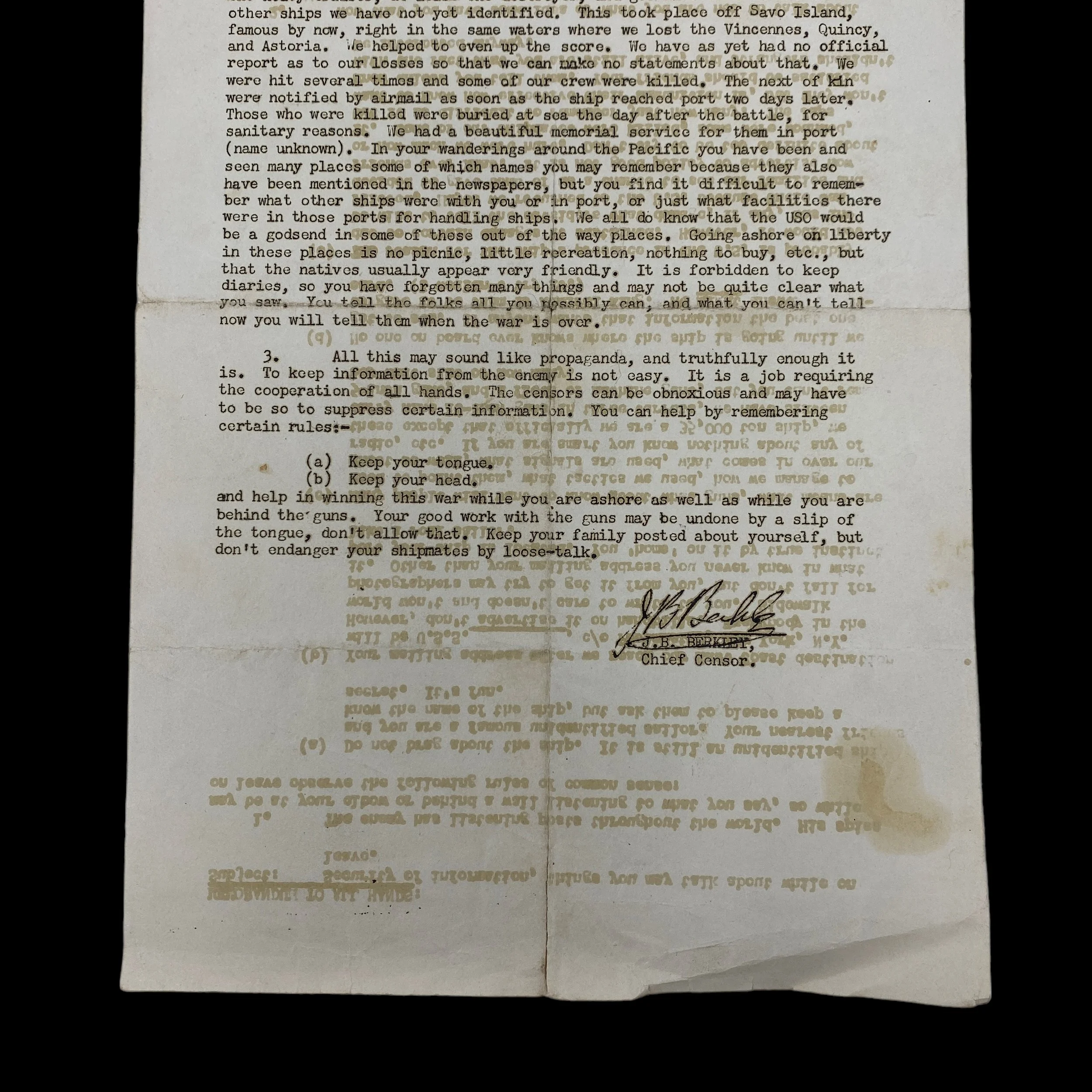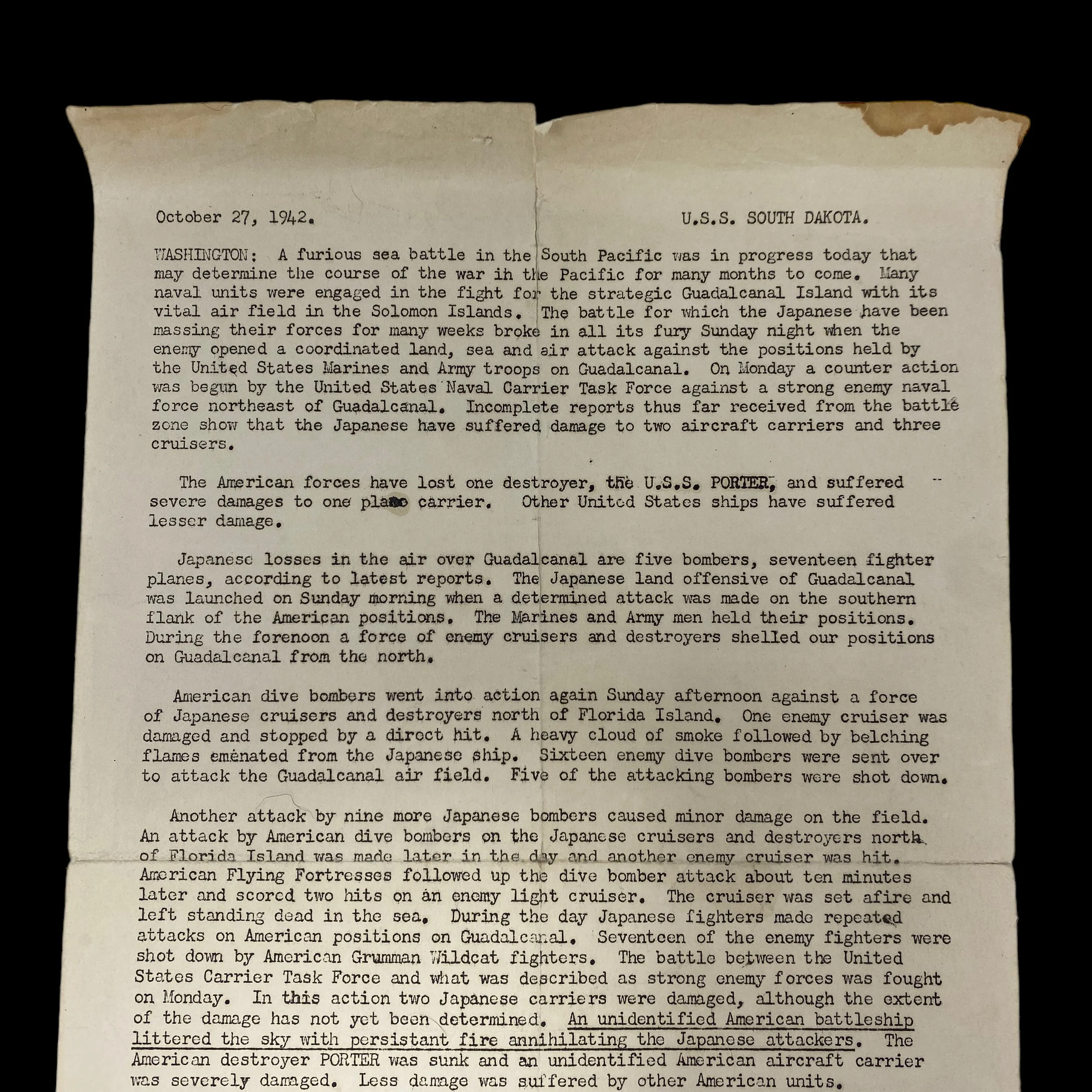VERY RARE! WWII October 1942 USS South Dakota Battle of Guadalcanal Original Combat Battle Report















VERY RARE! WWII October 1942 USS South Dakota Battle of Guadalcanal Original Combat Battle Report
Comes with hand-signed C.O.A. and full historical write-up
This incredibly rare and museum-grade WWII USS South Dakota Pacific Theater Operation Watchtower combat ship report is dated October 27th, 1942 (during the Battle of Guadalcanal), and was printed directly aboard the USS South Dakota for its sailors and officers. This combat report contains secret and detailed combat intelligence specifically mentioning the Battle of Guadalcanal, Solomon Islands, damage to the USS Porter, U.S. Carrier Task Force movements, etc.
The Guadalcanal campaign, also known as the Battle of Guadalcanal and codenamed Operation Watchtower by American forces, was a military campaign fought between 7 August 1942 and 9 February 1943 on and around the island of Guadalcanal in the Pacific theater of World War II. It was the first major land offensive by Allied forces against the Empire of Japan.
On 7 August 1942, Allied forces, predominantly United States Marines, landed on Guadalcanal, Tulagi, and Florida Island in the southern Solomon Islands, with the objective of using Guadalcanal and Tulagi as bases in supporting a campaign to eventually capture or neutralize the major Japanese base at Rabaul on New Britain. The Japanese defenders, who had occupied those islands since May 1942, were outnumbered and overwhelmed by the Allies, who captured Tulagi and Florida, as well as the airfield—later named Henderson Field—that was under construction on Guadalcanal.
Surprised by the Allied offensive, the Japanese made several attempts between August and November to retake Henderson Field. Three major land battles, seven large naval battles (five nighttime surface actions and two carrier battles), and almost daily aerial battles culminated in the decisive Naval Battle of Guadalcanal in early November, with the defeat of the last Japanese attempt to bombard Henderson Field from the sea and to land enough troops to retake it. In December, the Japanese abandoned their efforts to retake Guadalcanal and evacuated their remaining forces by 7 February 1943, in the face of an offensive by the U.S. Army's XIV Corps, with the Battle of Rennell Island, the last major naval engagement, serving to secure protection for the Japanese troops to evacuate safely.
The campaign followed the successful Allied defensive actions at the Battle of the Coral Sea and the Battle of Midway in May and June 1942. Along with the battles at Milne Bay and Buna–Gona, the Guadalcanal campaign marked the Allies' transition from defensive operations to offensive ones and effectively allowed them to seize the strategic initiative in the Pacific theater from the Japanese. The campaign was followed by other Allied offensives in the Pacific, most notably: the Solomon Islands campaign, New Guinea campaign, the Gilbert and Marshall Islands campaign, the Mariana and Palau Islands campaign, the Philippines campaign (1944–1945), and the Volcano and Ryukyu Islands campaign prior to the surrender of Japan in August, 1945.
Full Combat History of the USS South Dakota:
USS South Dakota, lead ship of a class of 35,000-ton battleships, was built at Camden, New Jersey. She was commissioned in March 1942 and in August was transferred to the Pacific where she was soon involved in the Guadalcanal Campaign. On 26 October 1942, her anti-aircraft guns played a prominent role in the Battle of the Santa Cruz Islands, during which her forward sixteen-inch gun turret was hit by a Japanese bomb. Shortly thereafter, she collided with USS Mahan (DD-364). Damage from these incidents was repaired locally, and she was heavily engaged, and damaged again, during the 14-15 November battleship night action off Guadalcanal, a battle that effectively ended Japan's plans to retake that strategic island.
Following repairs in the United States, South Dakota operated in the Atlantic from February into August 1943, including service with the British Home Fleet. She then returned to the Pacific and took part in the Gilberts and Marshalls invasions in November 1943-February 1944. The battleship operated with the fast carriers during raids on Japanese bases during that time and into the Spring of 1944. She next participated in the June 1944 Marianas Campaign, using her heavy guns to shell enemy positions on Saipan and Tinian. In the Battle of the Philippine Sea on 19 June, she was hit by another Japanese bomb.
Another stateside overhaul prepared South Dakota for further Pacific combat operations. From October 1944 to the end of World War II over ten months later, she screened carrier task forces during strikes in the Western Pacific that ranged from the South China Sea to Japan. The invasions of Leyte, Luzon, Iwo Jima and Okinawa were among these operations. In March and April 1945, South Dakota's guns joined in bombarding Okinawa. She shelled targets in the Japanese Home Islands in July and August, during the final acts of the Pacific War, and was present in Tokyo Bay on 2 September 1945 during the Formal Surrender of Japan. South Dakota returned to the United States soon thereafter and was decommissioned in January 1947. She remained inactive until October 1962, when she was sold for scrapping.